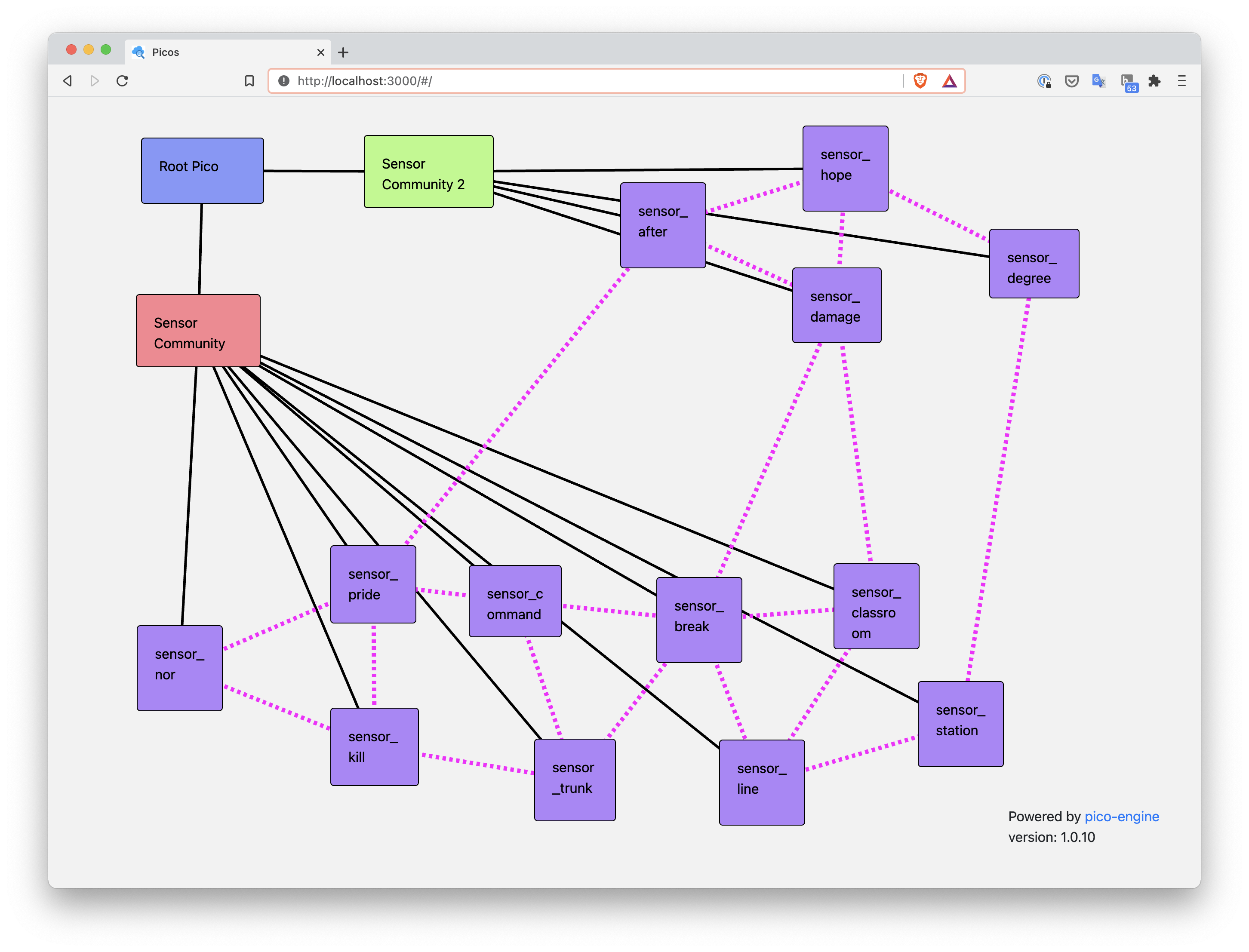Summary
Rule-based, actor model systems are a great match for IoT workloads.

Picos are a rule-based system for programming in the Internet of Things (IoT). Rules are a good fit for IoT programming because so much of what happens with things is event-based. Events say something happened. They are different from commands (telling) or requests (asking). A sensor might indicate the door opened, a light came on, or the temperature passed some threshold. An actuator might indicate its current status.
Rules, triggered by an event, determine what should be done to respond to the event. IoT rule-systems use event-condition-action (ECA) rules: when something happens, if this is true, do this. Multiple rules can be triggered by the same event. This allows functionality to be layered on. For example, an event that contains the temperature reported by a sensor might also report the sensor's batter level. One rule that responds to the event can handle the temperature report and another, independent rule can handle the battery level.
Picos are an actor-model programming system. Actors are a good match for IoT programming using rules. Actors keep state information and respond to events (messages) by changing their state, taking action, and possibly raising other events. Actors provide lock-free concurrency, data isolation, location transparency, and loose coupling. These are great features to have in IoT programming because devices are naturally decentralized, each acting independently.
Building a functional system usually involves multiple picos, each with a number of rules to respond to the events that the pico will handle. For example, I recently built a sensor network using picos for monitoring temperatures in a remote pump house using Lorawan. There is one pico for each sensor and a community sensor that manages them. The temperature sensor pico acts as a digital twin for the sensor.
As the digital twin, the sensor pico does all the things that the sensor is too low-powered (literally) to do. For example, one rule receives the heartbeat event from the sensor, decodes the payload, stores values, and raises new events with the temperature values. Another rule processes the event with the new values and checks for threshold violations. If one occurs, it raises an event to the sensor community pico. Another rule sees the new value event and takes an action that plots the new value on an external site. And there are others. The point is that rules make it easy to break up the tasks into manageable chunks that can thread execution differently, and concurrently, depending on Pixabay what's happening.
I've been using picos to program IoT systems for over a decade now. Rule-based, actor model systems are a great match for IoT workloads.




